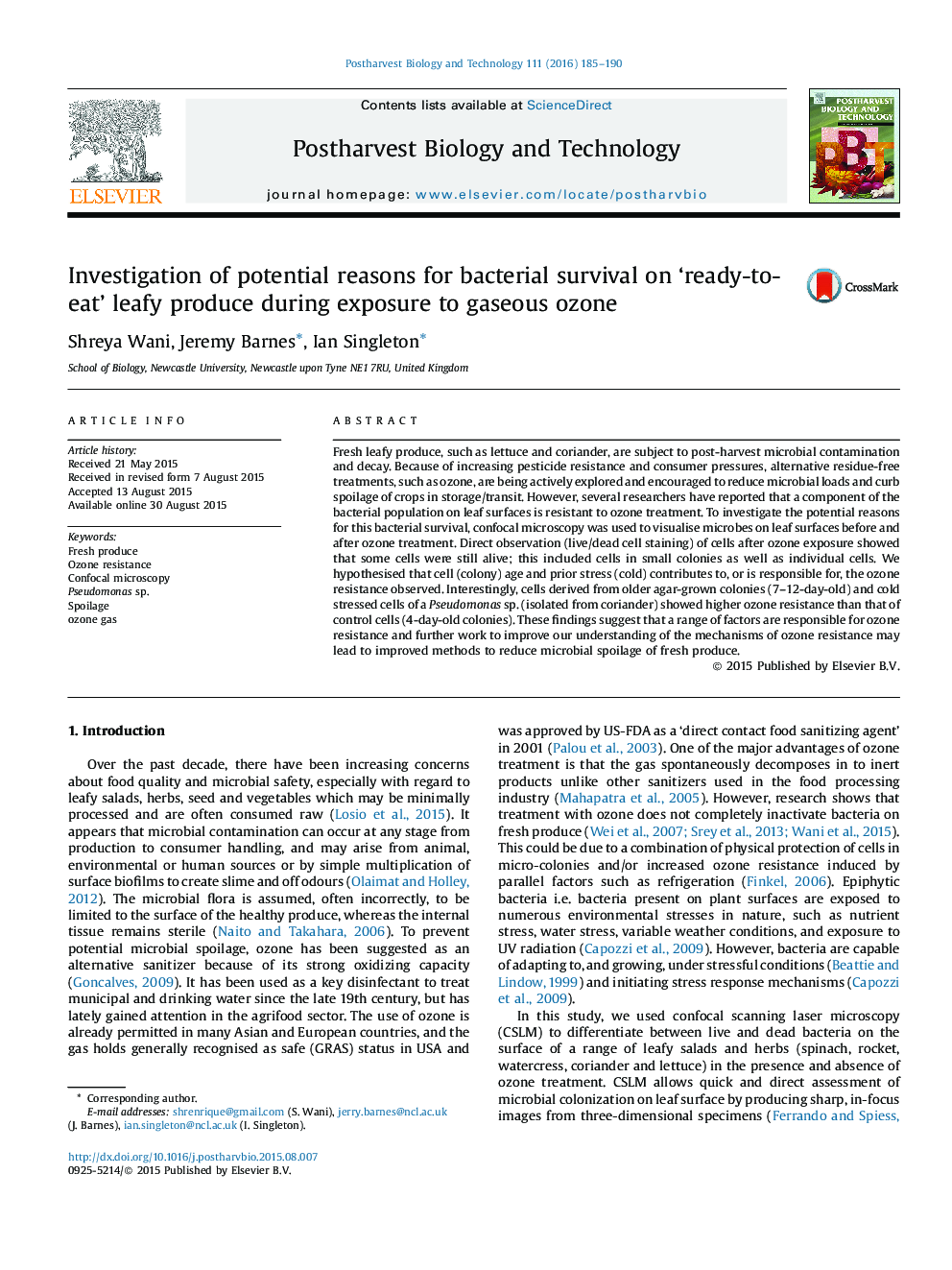| Article ID | Journal | Published Year | Pages | File Type |
|---|---|---|---|---|
| 4517871 | Postharvest Biology and Technology | 2016 | 6 Pages |
•Ozone gas was used to reduce microbial loads on leafy produce.•Optimized ozone exposure levels only killed 90% of bacteria present on leaves.•Confocal microscopy enabled observation of viable bacteria on leaf surfaces.•On leaves, both individual bacteria and those in colonies showed ozone resistance.•Bacterial cell age and prior cold stress exposure were linked to ozone resistance.
Fresh leafy produce, such as lettuce and coriander, are subject to post-harvest microbial contamination and decay. Because of increasing pesticide resistance and consumer pressures, alternative residue-free treatments, such as ozone, are being actively explored and encouraged to reduce microbial loads and curb spoilage of crops in storage/transit. However, several researchers have reported that a component of the bacterial population on leaf surfaces is resistant to ozone treatment. To investigate the potential reasons for this bacterial survival, confocal microscopy was used to visualise microbes on leaf surfaces before and after ozone treatment. Direct observation (live/dead cell staining) of cells after ozone exposure showed that some cells were still alive; this included cells in small colonies as well as individual cells. We hypothesised that cell (colony) age and prior stress (cold) contributes to, or is responsible for, the ozone resistance observed. Interestingly, cells derived from older agar-grown colonies (7–12-day-old) and cold stressed cells of a Pseudomonas sp. (isolated from coriander) showed higher ozone resistance than that of control cells (4-day-old colonies). These findings suggest that a range of factors are responsible for ozone resistance and further work to improve our understanding of the mechanisms of ozone resistance may lead to improved methods to reduce microbial spoilage of fresh produce.
